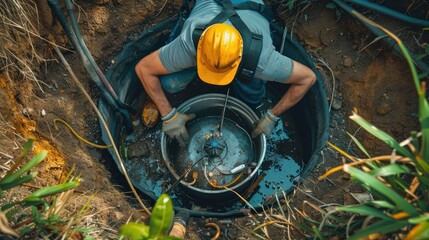Painting is a highly skilled profession that requires practice and training to master. Local house painters know what it takes to create long-lasting results that will keep your property looking its best.
They also know the best paint and materials to use on specific surfaces, giving you quality results that last longer than DIY jobs. Visit https://www.lionpaintingservicesfl.com/ to learn more about the few reasons why you should hire professional house painters.
House painters use a wide variety of tools to prep surfaces, mix paint and apply it effectively. They also need the right equipment to clean up afterward and ensure the job is done correctly. The best house painters know which tools are essential to the trade and have them on hand at all times. They will always have a multipurpose 5 in 1 tool for all kinds of prep, ladders to get them to different levels on the house and drop cloths to protect landscaping from paint drips. They will have a good quality paintbrush or paint roller for applying paint, caulk and fine grit sandpaper for any necessary sanding.
Local house painting contractors will have a strong understanding of the unique climate, geography and soil composition of the area in which they work. They will take these factors into consideration when advising clients on appropriate paints, materials and coatings for exterior projects. They can also offer expert color guidance and help to select a palette that will compliment the style and architecture of the property.
While DIY painting projects may seem like a great way to save money, they can actually end up costing more in the long run. Not only will amateur painting jobs lack the professional touch and quality, but they can also result in costly mistakes that may be difficult to correct. A qualified and experienced house painter will ensure a high-quality result that will enhance your home’s curb appeal for years to come.
Hiring a house painter for your next project will give you peace of mind and allow you to focus on the other things on your to-do list. Professionals will manage all aspects of the painting process from surface preparation and priming to painting and cleanup, minimizing disruptions to your daily routine and saving you valuable leisure time. The key to a successful house paint job is hiring the best professionals. Look for a local house painting contractor with the proper license and insurance to protect your home from unnecessary damage and ensure a quality finish that will last for years to come.
They Get the Job Done Right
Painting a room or the entire exterior of a home is a time-consuming endeavor. Professionals know how to properly prepare surfaces and apply paint, resulting in a smooth finish with precise detailing. They work efficiently to minimize the disruption of your daily routine and home life. This allows you to enjoy the results of your project without sacrificing valuable leisure time.
House painters are also knowledgeable in the many styles and finishes that are available for interior and exterior surfaces. They can recommend different types of paint, as well as specific brands that they have experience with. This is particularly helpful for homeowners who are unsure of what type of paint they should purchase.
Choosing the right painter is crucial to the success of your project. It is important to find a professional who has the skills, experience and expertise to complete the job in a timely manner and within your budget. Start by asking friends and family for recommendations. Then, compare their quotes to find the best price for your needs. Also, make sure that they have a contractor’s license and liability insurance.
When you hire a house painter, it is important to communicate clearly with them about your vision and expectations for the finished product. You will want to discuss the colors and finishes that you would like, as well as any special requests such as textured walls or faux painting. In addition, it is a good idea to discuss any other services that may be needed, such as drywall repairs and power washing.
A professional house painter will provide you with a detailed estimate for their services, including labor, materials and paint. They will also provide a timeline for the completion of your project. This will give you an idea of how long the project will take and how much it will cost. They will also provide you with a list of references and testimonials from previous customers.
House painters are committed to providing high-quality workmanship that exceeds industry standards. They use premium paints and tools, and follow strict safety protocols to ensure superior results and a safe work environment.
They Give You a Detailed Estimate
When you hire a house painter, the first thing they do is give you an estimate for the project. This will include a project scope, completion timeline and labor and materials costs. Depending on the contractor, this may be done on paper or through estimating software.
A good estimate should include everything that will be included in the work, from the paint and supplies to the cleanup services and any additional services needed to complete the job. It should also provide a detailed breakdown of the cost of each item. This will help you compare estimates and make the best choice for your home.
In addition to providing you with an accurate and comprehensive cost estimate, professional painters will explain the benefits of different paints and coatings and help you select colors that are right for your home. They will also address any structural concerns that could affect the quality of your paint job.
It is important to get at least three bids for your painting project. While you may be tempted to choose the lowest price, remember that you will most likely get what you pay for. Cheaper paints are less durable and will not last as long as a high-quality product.
When evaluating the quality of your painter’s work, be sure to ask for references and follow up with them to determine how satisfied they were with the finished product. Also, watch out for excessive delays or unexpected costs in the project timeline without valid reasons or clear communication from the painter.
If you are looking to become a house painter, understanding the ins and outs of creating a great estimate is a critical step in building your business. By learning how to provide an accurate and professional estimate, you will be able to set clear expectations for your clients and win more jobs. If you are looking for a way to streamline the process of creating and sending quotes, try out a free construction bidding software like Jobber. You can build an estimate, send it to your client, and track the progress of the project all in one place!
They Have the Right Insurance
A home that is painted well can protect it from the elements, keep it looking fresh and clean, and even increase its value. But it takes a lot of time to paint a house by yourself and the tall ladders you need can be dangerous, especially if you have kids around. That’s why most people choose to hire a professional to do it for them. But you’ll want to do your homework before hiring one. There are many different companies out there, and their quotes can vary dramatically. Here are a few things to look for when getting a quote from a painting company.
Besides a detailed, accurate estimate, good house painters will carry the right insurance policies. This includes general liability insurance that can help cover damage to third parties and their property, as well as errors and omissions insurance for coverage in the event of business mistakes that could cause financial loss for customers. Workers’ compensation insurance is another important policy to have because it can help pay for medical costs and lost wages if an employee gets injured while on the job. Finally, commercial auto insurance can help pay for the cost of a repair or replacement if an employee is driving a work-related vehicle when an accident occurs.
It’s also important for house painters to have a contractor package policy or business owner’s policy, which combines several insurance policies into a single bundled deal. This can save money and make it easier to manage the risks of a painting business. You should also consider umbrella insurance, which is an extra layer of protection that goes above and beyond the coverage limits of your general liability, workers’ comp, commercial auto and errors and omissions policies.
While it is possible to save a few bucks by doing your own painting project, a house painter will get the job done faster and better than you can. That means you’ll have more time to relax and enjoy your freshly-painted home.






